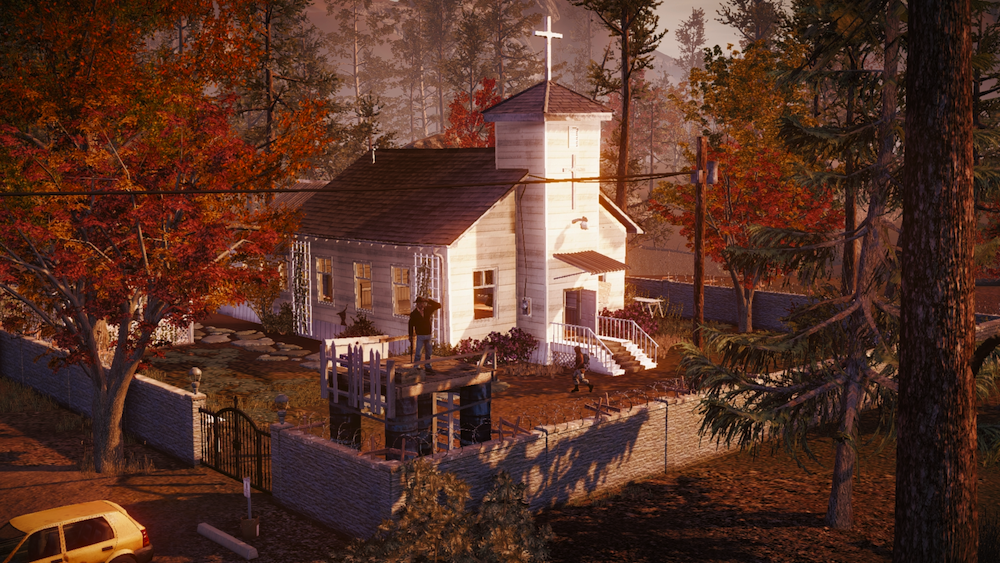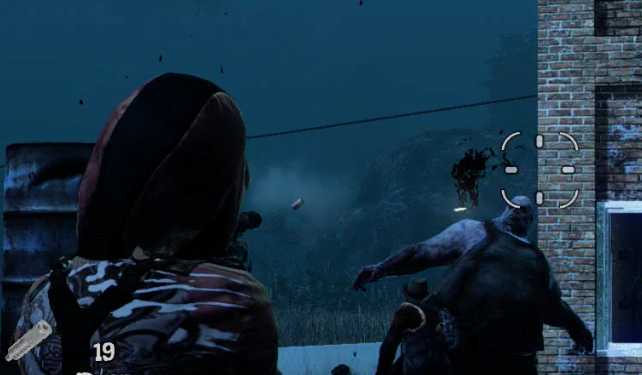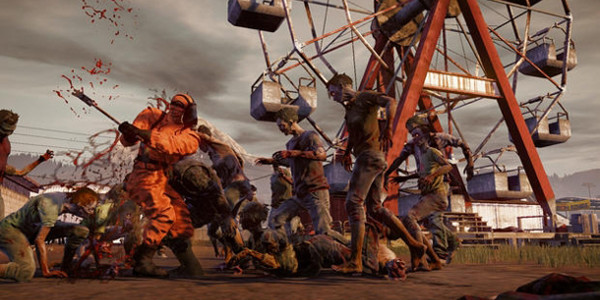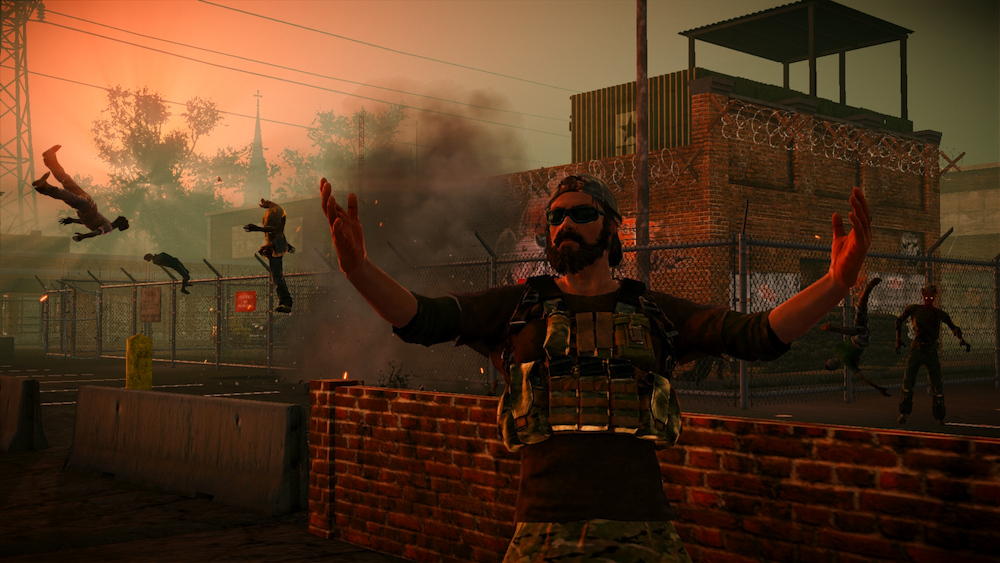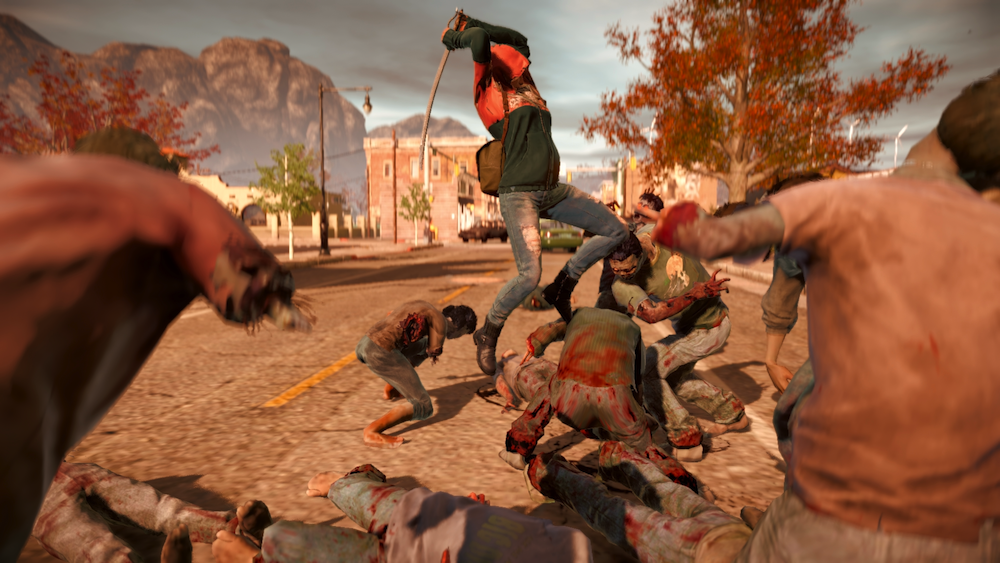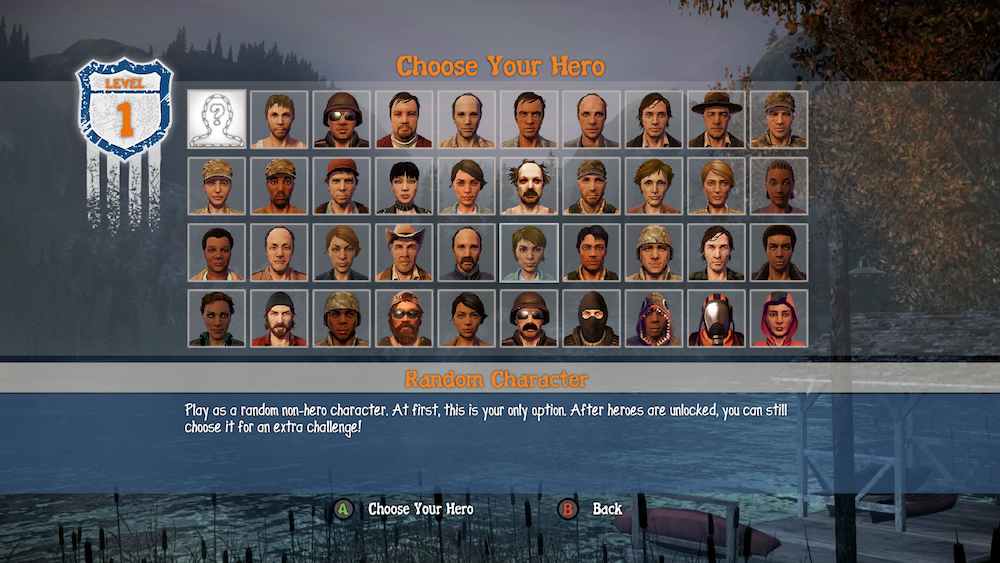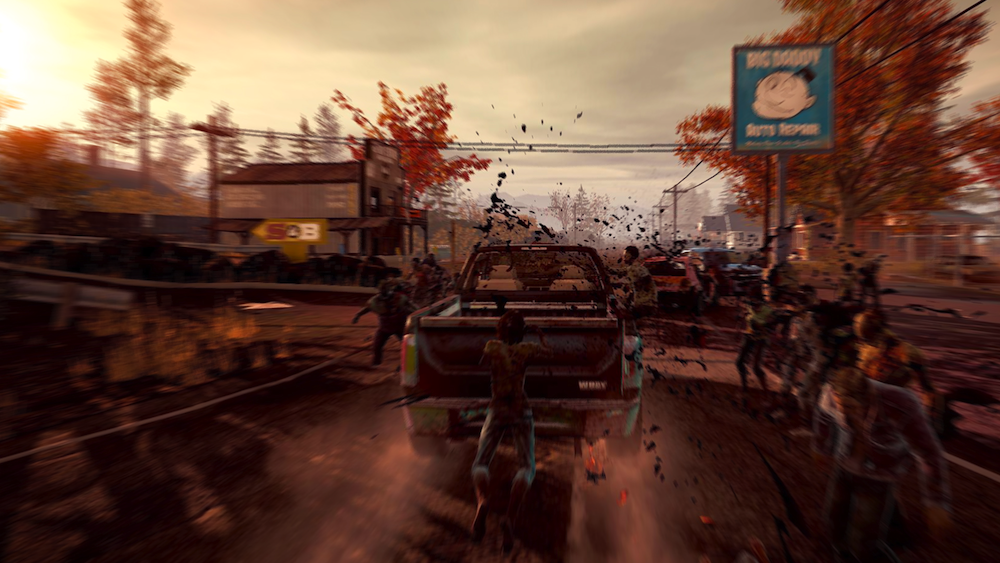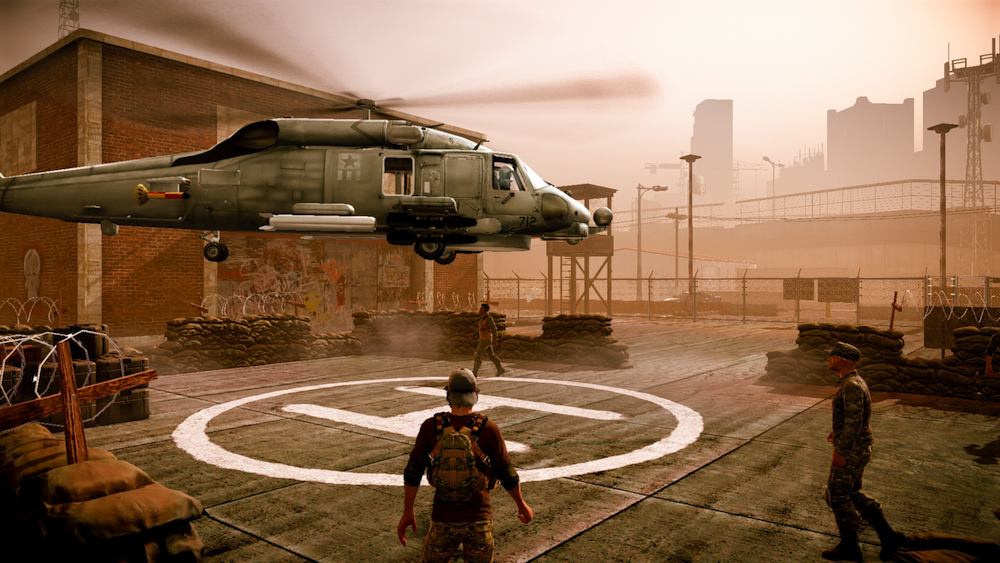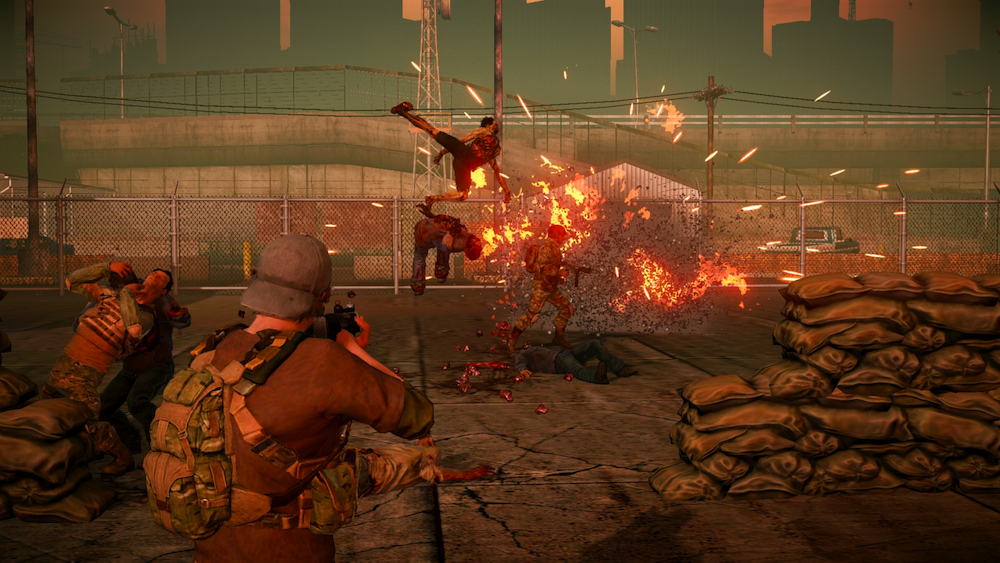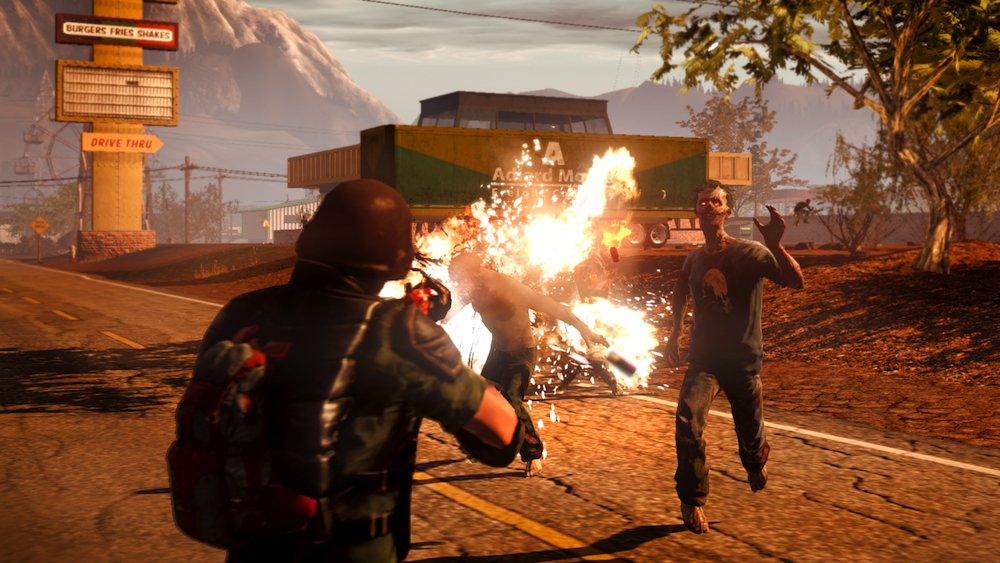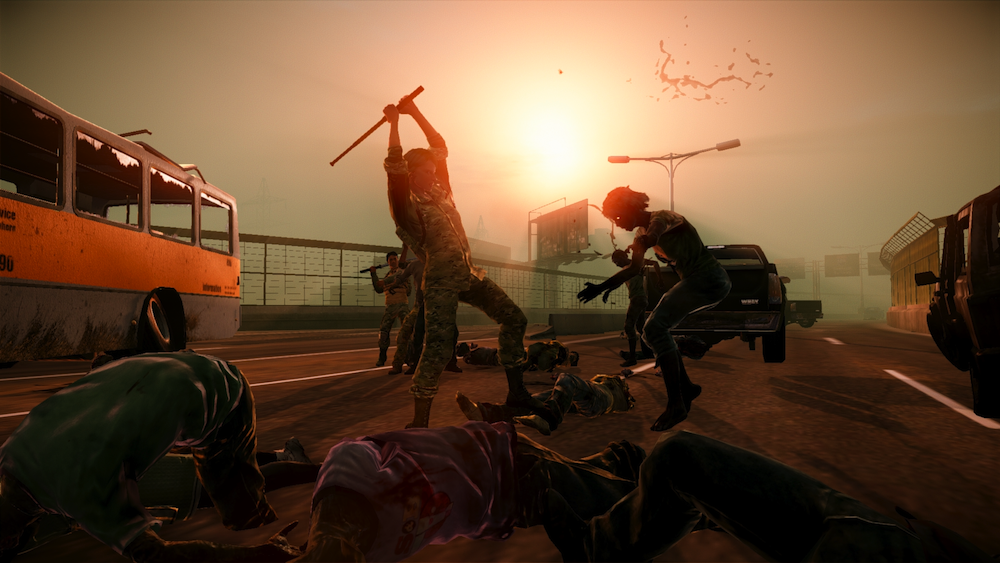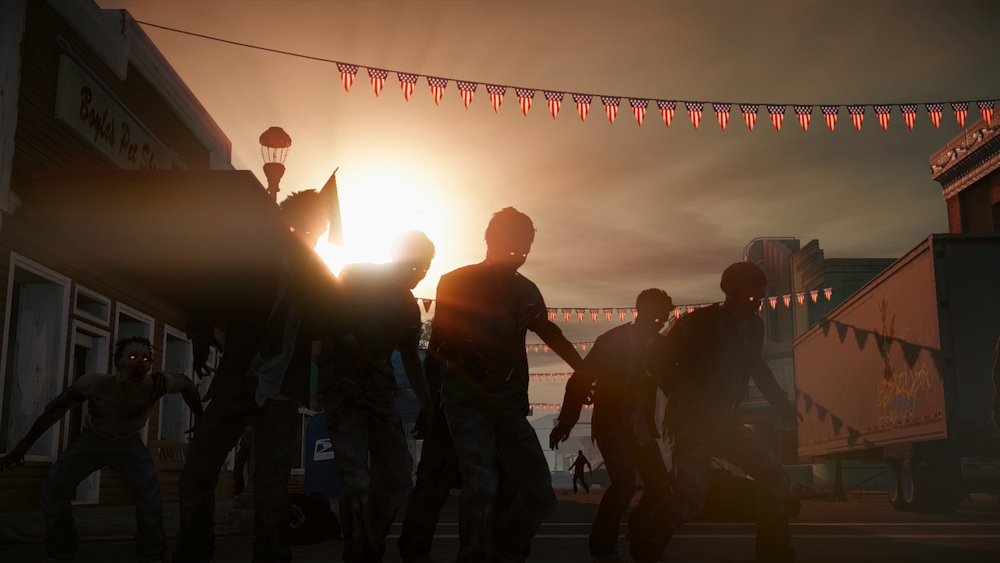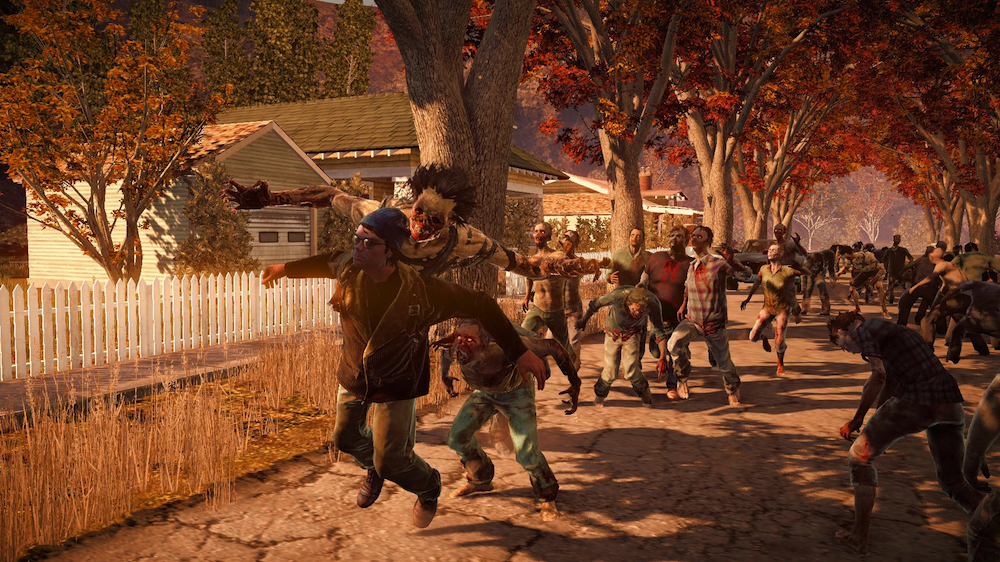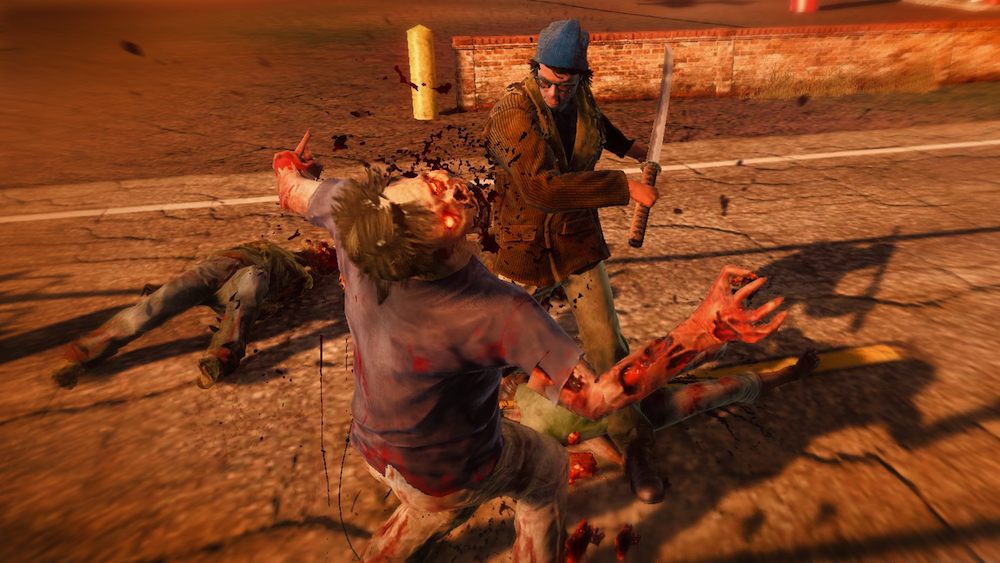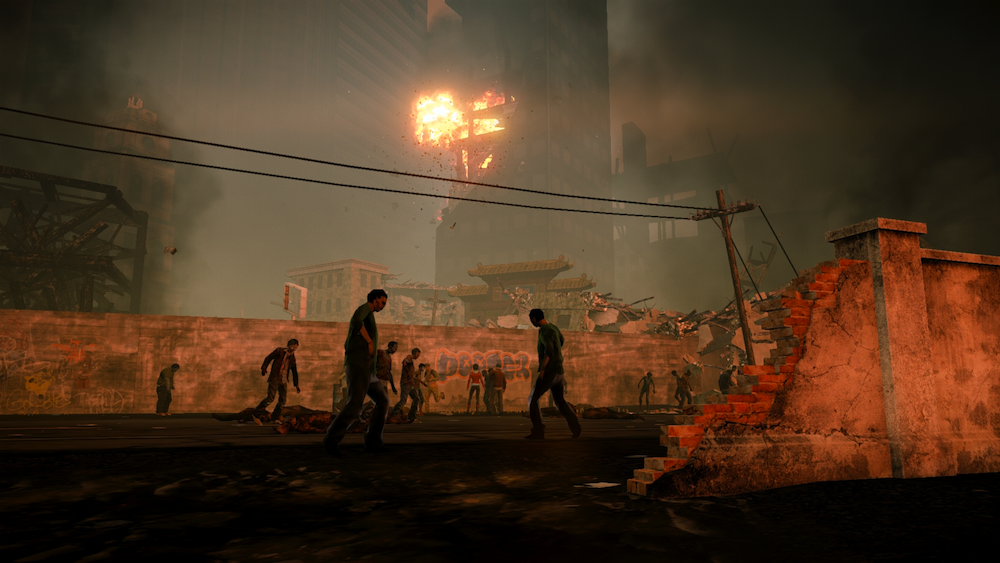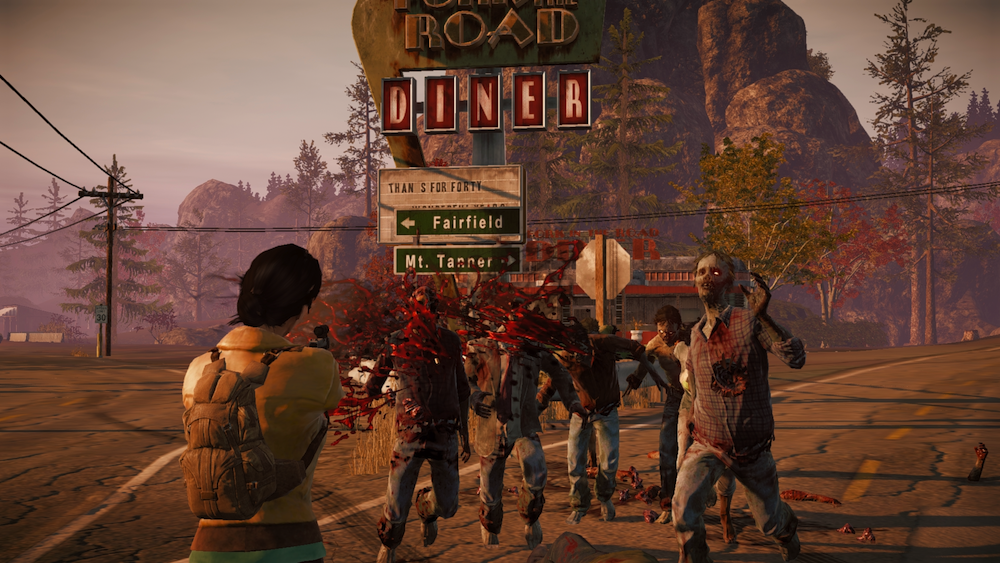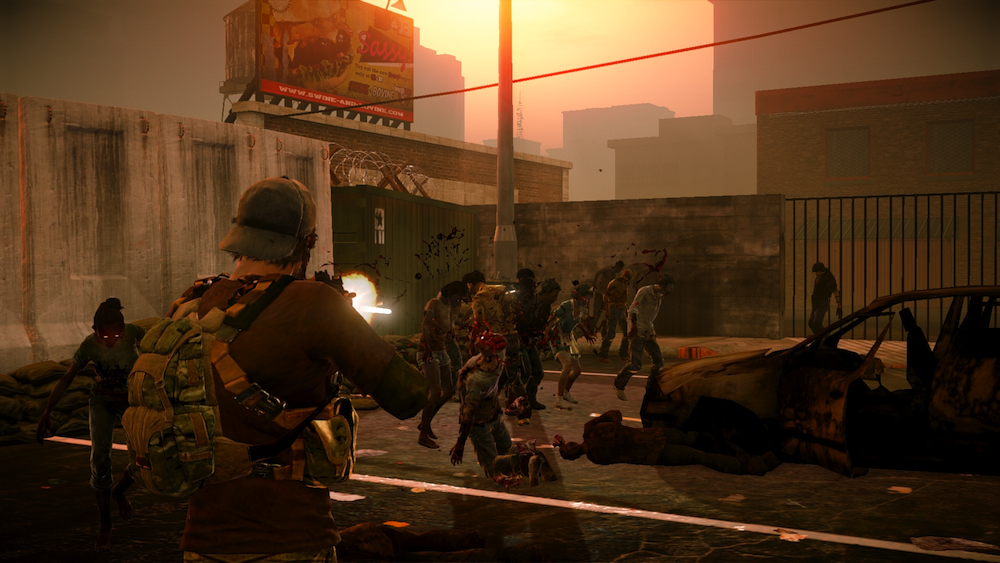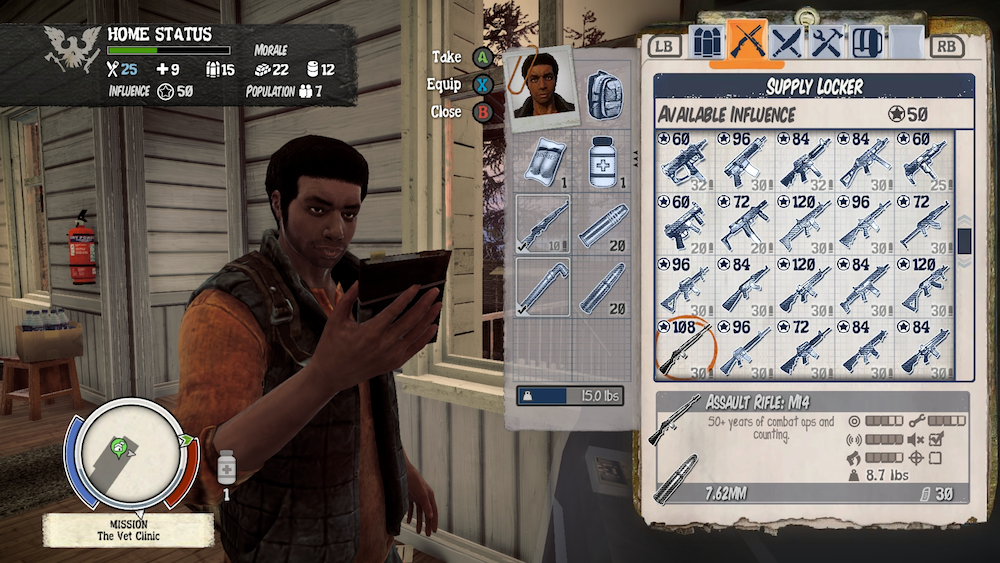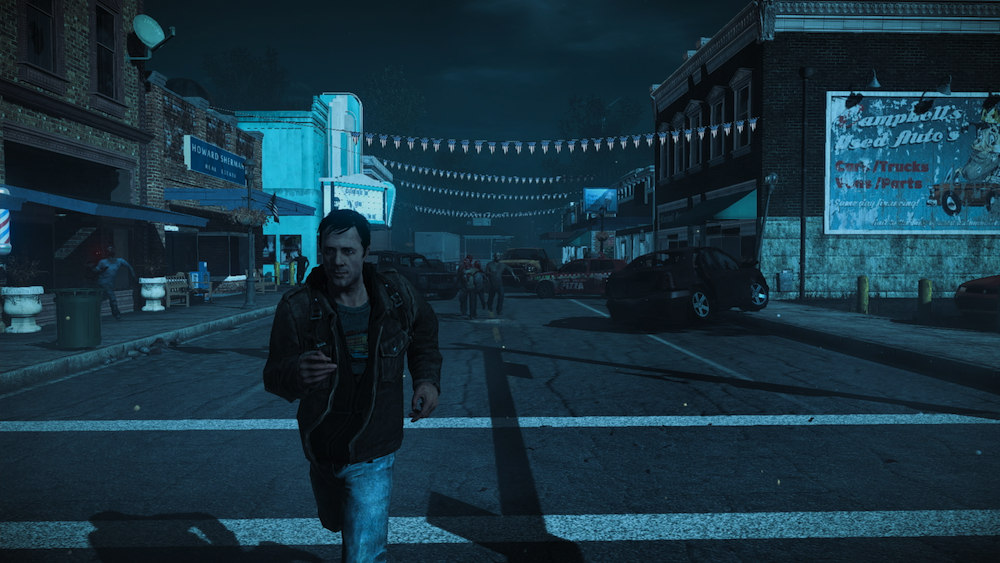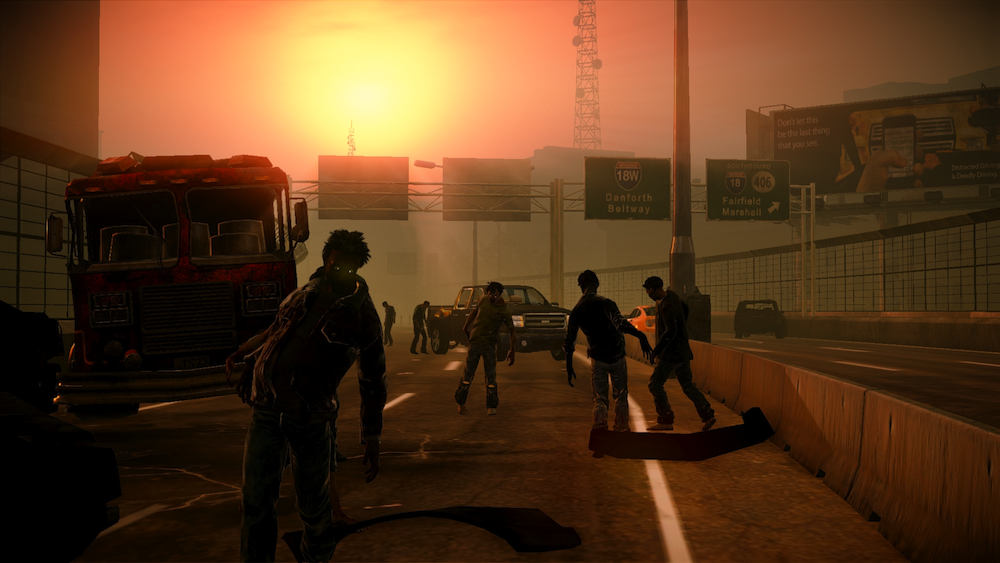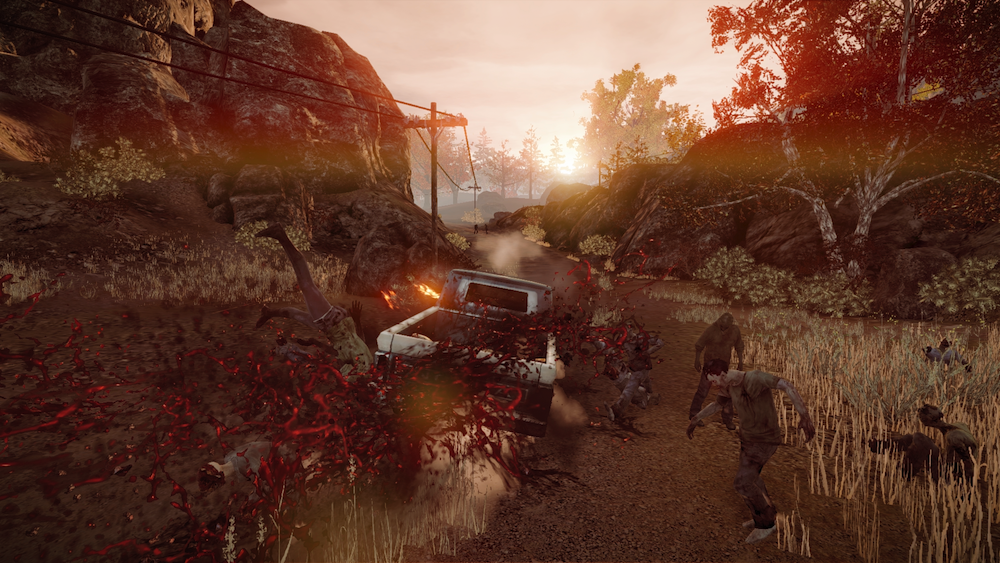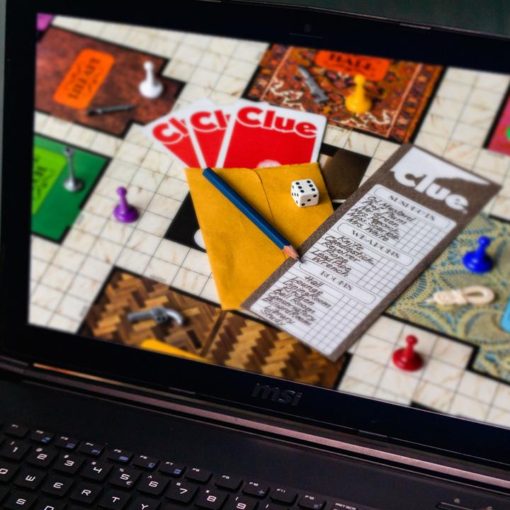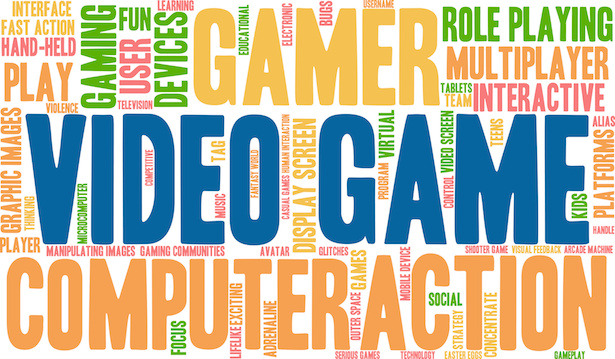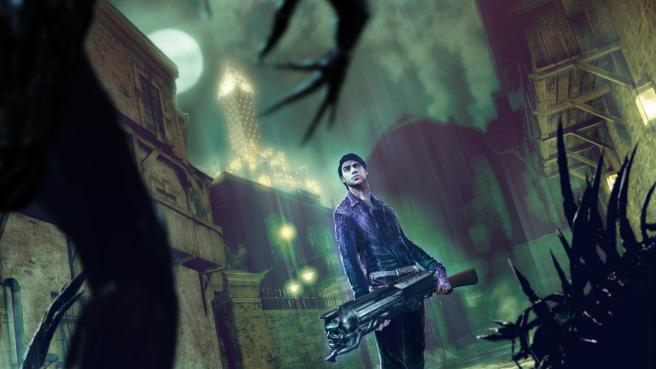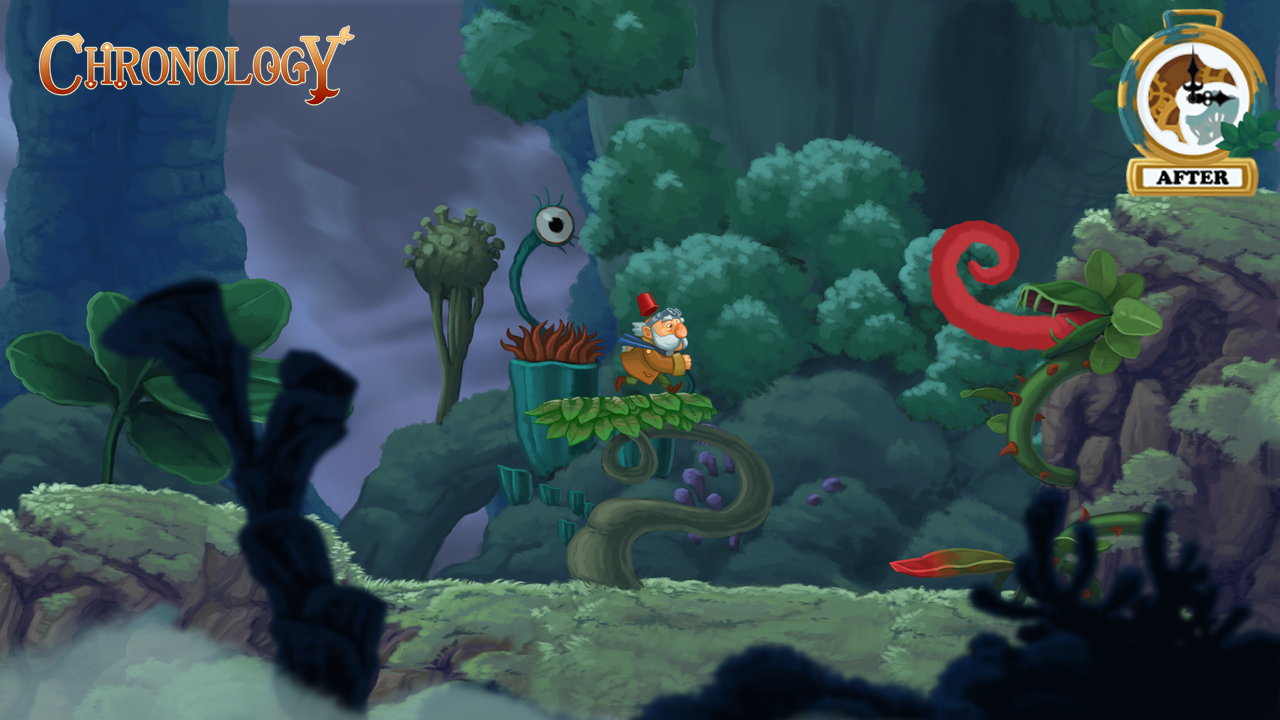It’s been 25 days since I gained early access to State of Decay Year One Survival Edition. We don’t get a ton of review codes around here; as a smaller site with a focus a little to the left of traditional gaming sites, we’re not exactly a standard destination for reviews, but I’d spent so much time exploring different angles of the original release that we were put on the list, and I was thrilled. State of Decay was one of my favorite experiences on the Xbox, knocking aside Left 4 Dead and Dead Rising to claim the title of my go-to zombie-killing experience. Those games are fun — great, even — but there’s only so much to do with mostly-linear levels in the one, since I no longer venture anywhere near online multiplayer, and with a time limit on the second.
State of Decay, though, is really three games, or three modes, and in those 25 days, I’ve clocked one hundred hours. Of course, I had two story modes to play in, and the third mode is potentially endless. All three require different approaches, different styles, different levels of planning. I relish this, balancing story missions with pop-up problems in the main game, mapping out what I’m going to do, and with whom; deciding how to build a base, how to train, how to live, and who survives until the end. Managing resources requires more than a bit of forward-thinking; can we stay at the church until we move to Marshall, or dare we move to the farmhouse or Kirkman house as a stop-gap? Materials for building are so precious at times, can we spare the fifty or so to build a facility we’ll abandon after these places are all searched out? Though I’ll say I found story mode much easier this time around, perhaps after so many hours in the original, I still found myself counting, thinking, subtracting, planning for inevitabilities. Do I play these outposts here where they might be more useful, or here, where I can use them to maximize my supply intake? Do we need safety more than we need things? Does one exist without the other?
I’ve put off finishing the stories. I’ve seen how they end. I’m not ready for it yet, but I do have plenty of thoughts about the game, the changes, the updates, and what the experience has meant to me. I can’t call it a post mortem, not yet, because I’m not done. I don’t know when I’ll be done. Ask me in a year, maybe two.
In the spring, I’m often sick; between allergies and asthma, I get hit hard. In the last four years, I’ve been hospitalized multiple times in mid-winter and spring, thanks to a few bouts with pneumonia and pleurisy (who gets pleurisy?!), and once the pollen hits, I teeter on the line between sinus infections and bronchitis for weeks. April, for me, tastes like cough drops.
I feel most for my children during these weeks, because it’s so hard to run and play with them when it feels like my chest might cave in, and that’s inside. Walking outside is like walking underwater. The air is heavy and hostile. Immediately, I’m tired. There isn’t much I can do on the worst days: wash a few dishes, maybe, cook a light dinner, and read. I can play, though, curled on the sofa with a blanket tucked just so around my arms to allow freedom of movement, with frequent pauses when a coughing fit strikes. I can play, and in the game I can run outside. In the game, I am nimble and quick; I can roll through grass and pause under a tree to admire the scenery.
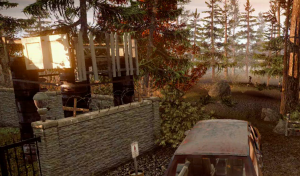
Maybe that’s why I seemed so taken with the graphic upgrade in the updated game. While State of Decay’s no mind-blowing, face-melting graphical experience, there are moments when the dust eddies unfurl down a long and lonely road and the emptiness seems to press like a weight. I noticed the improved visuals from the moment I started the new game, because the opening area was so vibrant, with a low fog over the lake, trees that loomed rich and red, and flowers dotting the meadow. The flowers were there in the original, but just there, sort of dull and not something I really noticed. In YOSE, though, they were so bright, and jarring, too, because in the middle of those flowers, I’m busting zombie heads in a spray of gore, and it all feels so surreal.
There were so many little moments like this, when I’d gasp and catch my breath. I remember standing in Marshall, one of the towns, near the Savini house. I’d been running up the street, going to retrieve a car I’d left behind in the cul-de-sac, and in the middle of a fight, I happened to spy fires burning in the distance. “Holy shit,” I said to no one, but it seemed like something that had to be shared, even if I was alone. “Is that the courthouse burning?” The courthouse, you see, was across the river and down another street, and the distant, shimmering fire was so beautiful, and so terrible, that I simply stopped to stare. I called my husband in, even. “Look,” I said. “I don’t think you could see that before from here. Just look.” And then we both did, until the zombies came, as they always do.
I stop there nearly every time I’m near that spot, just to look and admire, because the ability to see at such distances makes this world so much more real, and when I’m on the sofa struggling for breath, that’s the only world I have.
State of Decay isn’t perfect; there are bugs, there are things I’d change, and there are things that could be considered design flaws from one perspective or another, but more than any other, this game has made me question fully the idea that there can be such a thing as an “objective” review. I’ve seen so many different takes on the updated version; some reviewers declare it much improved, and others say the updates and changes are hardly noticeable. Erik Fredriksen at TechnoBuffalo says the game’s “art lacks any cohesive style”…”it’s not fun to look at,” and all that’s subjective, certainly, and I don’t agree; to each their own, I suppose. But he also says, “The game’s framerate, though, is the worst. I want to reiterate that this is a 2 year old game built for the Xbox 360. Despite the game’s age and origin, it runs terribly on the Xbox One and in this case it’s pretty tough to blame the console’s power. The framerate is constantly dipping and stuttering. I noticed it especially if I hopped into one of the speedier cars littered around the map and floored it. The game would stutter anytime I started or stopped the vehicle.”
These are not issues I had. get some zombie clipping, which can be frustrating when you’re trying to clear an infestation or a besieged, something that depends on wiping out all the targets in a particular location, impossible when one is stuck in a wall. I experienced the second coming of the Breakdown scoring bug, something that makes me want to kick a hole in the wall. Rarely, I get rucksacks disappearing, but only after I’ve left far too many lying around. But I think I’ve seen the game stutter a bare handful of times. But that’s memory, notoriously untrustworthy. Does my game stutter and I just don’t notice, because I don’t care?
So what’s objective? Is State of Decay broken? Is Frederiksen’s Xbox One broken? Is my memory? Are we all broken? I don’t know; all I know is that Breakdown scoring surely is broken, but beyond that, I couldn’t say. I keep reminding myself that this was an XBLA game, a game that’s still tiny in size (4GB in the new version!) compared to anything else with this kind of scope. What Undead Labs has achieved with that, in my opinion, is tremendous.
That said, I’d love the chance to make certain people stay at home. My coveted tools/medic combo person, the best find in Breakdown and the anchor of any team, should never go out to hunt ferals. For me, right now, that’s Shayla, and for one, she should be busy; she’s got suppressors to make and wounds to stitch, but for two, we can’t risk her. Why can’t we flag certain people and order them to stay at home? A little more control in that aspect would be nice.
I’d like more base options, too. My default is the Savini house on later levels of Breakdown, and in story mode as well; it’s easily defended and in a convenient spot, but when I say default, I mean it’s the place I set up camp 90% of the time, and it’d be nice to have a little more variety. I just finished a level at the fairgrounds and I stayed far longer than necessary just for the sheer novelty of it. But getting in and out of the fairgrounds base is inefficient, hardly worth it when there’s hours and hours of game to go, and who chooses the tiny church or the Alamo?
Sometimes, I think, I’d like to see four or five rotating maps in Breakdown; when you load up the RV and drive off into the sunset, you might stall out in another valley, or in a set of suburbs, or just a Trumbull Valley with the fairgrounds to the south instead of the north. But then I think about what it means to play the exact same map over and over again. Obviously, from a development standpoint, it kept the game small. But from an outside perspective, the sameness carries with it a certain futility. It doesn’t matter where we go, or where we stop, or where we live. Eventually, the supplies run out. Eventually, we leave friends behind. We do it all again and again until everyone dies.
There’s a horror in that, and maybe I wouldn’t change it after all.
The hundred hours isn’t all me. I’m not that obsessive. Once I got what I needed for my videos and early reviews, my husband and I took to YOSE much as we had to the original, playing together in Breakdown. It doesn’t really matter who’s holding the controller; our game is a team effort, meticulously planned levels in advance. We talk as we play, changing strategy and approach, hammering out an order for searching houses and undertaking missions, determining how and when to build the support buildings that will allow us to maximize our crew’s knowledge and abilities. We howl and cringe together over deaths. In this game, we are one unit, one player with four hands, two brains. We rarely argue; we’ve done this too often. We know what works.
I cringe to think how many hours we put into the original.
I realized recently I haven’t read any strategy guides or tips, really, for State of Decay. Often, I do, with games I like; I look for ways to maximize efficiency, because tedium and repetition sometimes get to me. But recently, when I was looking around for something about resurrecting heroes, I ran across some list of strategy tips, and I was so surprised by what was there. Board up windows? Does anyone do that? I never do that. I wondered then if I played differently than other people. In my stream, sometimes, I’m told to turn on the flashlight, or car headlights. I never do; I move in the dark unless necessary. I rarely sneak. I drive over zombies with abandon.
We’ve developed our own strategies, though, plans for building structures in the beginning levels of Breakdown to maximize research. We line up cars at strategic locations so we can search an entire part of town quickly and easily. We pore over stats and weapons and specialties when it’s time to choose the team that will move on, arguing, trading characters. We both have our favorites. We spend hours searching for things we don’t need to build just a little more influence, so we can fill inventories enough to start a new level with things we can put back into the bank so we start with influence, and this means swapping characters in and out, removing favorite or useful weapons from characters who won’t be making the journey, tracking people down, more scavenging, more fighting, more driving.
Yet I only notice the tedium of searching from house to house when I’m streaming. Then I’m acutely aware of how boring a game this must be to watch. Search, fight, search, go home, search, fight, repeat. The occasional juggernaut, pair of hordes, or supply drop injects a little excitement, but often, I’m just driving. I’m just running. I’m just surviving.
It never feels tedious when I’m doing it, though. When I’m doing it, it all feels so necessary.
I don’t know where State of Decay falls on my all-time list of favorite games; I don’t know how much an improvement the updated edition really is. Neither of those things is objective, and nor are they static. Hold SoD up to Dishonored and the zombies will lose every time, on every measurable level, except I’ve spent more time with this ragtag bunch than I ever did with Corvo. I could draw so many screens from the original Legend of Zelda from memory, but it’s State of Decay that haunts my dreams, and I’ve spent as much effort and thought meticulously collecting materials for my base and designing the setup as I ever did continents in any Civilization. Here’s what I know, measurable or not: despite its flaws, this game appeals to me on every level that matters in my game worlds. I can plan and think and experiment, testing new methods even now, after hundreds of hours across two systems, and the story around it is malleable; I can change the narrative if I need to and create new stories, new teams, new goals, and despite the lack of official co-op or multiplayer, I can play with my husband, sitting side-by-side on the sofa, yelling together at the screen, leaning as one when we whip around a curve, and crying out in unison when we find a particularly beloved survivor in an enclave down the road. And maybe I can’t write a post mortem now or ever, because maybe I’ll always come back to this, but I can say (subjectively) that it’s worth it.
This piece was written as part of Critical Distance’s Blogs of the Roundtable on the “plans” theme, though it went beyond that and came back again.

